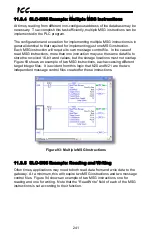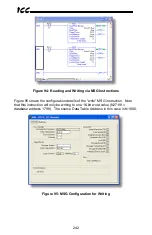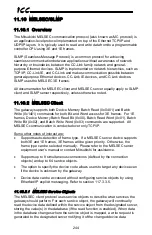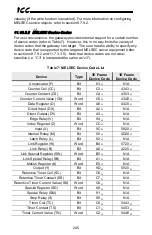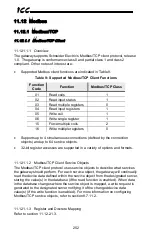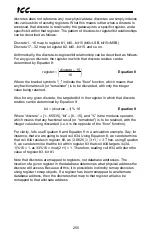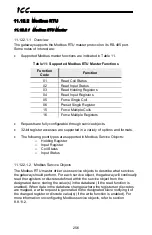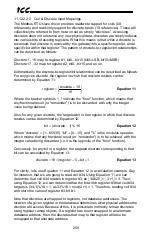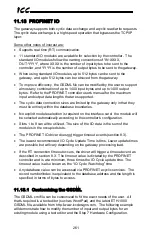
255
ICC
discretes does not reference any new physical data: discretes are simply indexes
into various bits of existing registers. What this means is that when a discrete is
accessed, that discrete is resolved by the gateway into a specific register, and a
specific bit within that register. The pattern of discrete-to-register/bit relationships
can be described as follows:
Discrete 1...16 map to register #1, bit0...bit15 (bit0=LSB, bit15=MSB)
Discrete 17...32 map to register #2, bit0...bit15, and so on.
Arithmetically, the discrete-to-register/bit relationship can be described as follows:
For any given discrete, the register in which that discrete resides can be
determined by Equation 8:
+
=
16
15
discrete
register
Equation 8
Where the bracket symbols “
” indicate the “floor” function, which means that
any fractional result (or “remainder”) is to be discarded, with only the integer
value being retained.
Also, for any given discrete, the targeted bit in the register in which that discrete
resides can be determined by Equation 9:
16
1
discrete
bit
%
)
(
−
=
Equation 9
Where “discrete”
∈
[1…65535], “bit”
∈
[0…15], and “%” is the modulus operator,
which means that any fractional result (or “remainder”) is to be retained, with the
integer value being discarded (i.e. it is the opposite of the “floor” function).
For clarity, let’s use Equation 8 and Equation 9 in a calculation example. Say, for
instance, that we are going to read coil #34. Using Equation 8, we can determine
that coil #34 resides in register #3, as
3.0625
=
3 r1
= 3. Then, using Equation
9, we can determine that the bit within register #3 that coil #34 targets is (34-
1)%16 = 1, as 33%16 = mod(2 r1) = 1. Therefore, reading coil #34 will return the
value of register #3, bit #1.
Note that discretes are mapped to registers, not database addresses. The
location of a given register in the database determines what physical address the
discrete will access. Because of this, it is possible to indirectly remap discretes
using register remap objects. If a register has been remapped to an alternate
database address, then the discretes that map to that register will also be
remapped to that alternate address.

